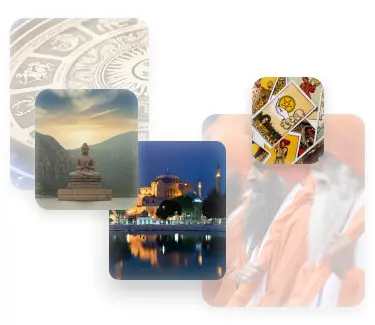The ideas of dualism are reflected in the pages of scientific and publicistic journals devoted to the issues of human consciousness, quantum mechanics and the theory of microparticles.
Dualism
Dualism – recognition of two alternative ideas within a single concept or theory. At the same time, ideas are in deep conflict or contradiction with each other. In the context of philosophy, dualism considers equality and simultaneous opposition of the material and spiritual principles of the universe.
Dualism arose with the appearance of the first religious forms of consciousness in the era of the primitive communal system.
Brief history
The opposition of the two foundations of existence has been known since the emergence of most ancient religious practices: animism, totemism, fetishism, magic and shamanism.
The founders of dualism in the context of philosophical thought are considered to be Plato, Aristotle and Rene Descartes. In particular, these thinkers argued that the material and the spiritual (ideal) are fundamentally different from each other. For example, material objects have certain physical properties: mass, volume, position in space. In turn, spiritual phenomena are exclusively subjective and exist in human consciousness.
Within the framework of religious consciousness, dualism developed in the process of comprehending the material perishable world and, in particular, the perishable human body and the idea of an immortal soul. In almost all the religions of the ancient world, the Middle Ages, and then the Modern Era, the idea of the almighty Creator God and the material world created by Him is considered within the framework of dualism. In modern Christianity and Islam, the eternal and true world of God is opposed to the material world created by Him, and God is in eternal contradiction with the devil. At the same time, the objects of contradictions mentioned above are inextricably linked with each other and cannot exist by themselves or in isolation from each other.
The concept of a dualistic understanding of the foundations of the universe is also inherent in modern Eastern mysticism. In these mystical-religious systems, the world is seen as an arena of confrontation between two principles – good and evil, creation and destruction, etc.
Essence
There is no single interpretation of dualism in modern philosophy, therefore, dualistic ideas should be considered only in the context of the history of philosophy or its individual trends or branches of scientific knowledge.
In Eastern religious philosophy, both the body and human consciousness are considered material.
In the philosophical system of Rene Descartes and the philosophy of consciousness, the mind (human consciousness) is opposed to the bodily (physical) principle. So, according to Descartes, matter has certain physical characteristics, while thinking is inherent in the spirit. These two contradictions are realized in the format of a person who is a physical being with a spiritual principle – consciousness.
We find a similar interpretation of dualism in the philosophy of Aristotle (substantial or Cartesian dualism). Physical objects have a number of parameters that define them in the material world. Spiritual entities are relevant only in consciousness, that is, they exist exclusively in the form of ideas.
In the philosophy of science, the object (object or natural phenomenon) and the subject (the observer himself) are opposed. This approach is used in experimental science, which assumes an inextricable link between the observer (experimenter) and the phenomenon, object or process observed by him.
Within the framework of the dualism of properties (qualities), the existence of spiritual ideal phenomena outside of human consciousness is denied. The role of the human brain is to generate images, ideas and representations, the primary basis of which is exceptionally ideal.
In modern philosophy, when trying to solve the problem of consciousness within the framework of a dualistic approach, it is believed that the human mind has special characteristics that cannot be explained only by the physiological work of the brain.
There are two main directions for solving the psychophysical problem – these are dualism and monism. The first proceeds from the assumption that consciousness has a special nature, fundamentally irreducible to physical material reality. There are several variants of dualism.
The concept of psychophysical parallelism states that the consciousness and the physical body of a person, despite the close relationship, do not fundamentally influence each other.
Biography of creators
Plato (428-347 BC). An Athenian philosopher, born into a family of aristocrats, wrestled and became an Olympic champion in pankration wrestling. A student of Socrates, he lived in Sicily for some time, and then returned to Athens, where he created his own philosophical school, the Academy. The author of the cycle “Plato’s Dialogues”, the founder of a number of political and social doctrines.
Aristotle (384-322 BC). Founder of the Lycian school, author of the philosophical terminology of categories, scientist-encyclopedist and founder of the natural sciences. Born in the city of Stagira, he studied with his father, who served at the court of Macedonia, then at the Academy of Plato. Taught Alexander the Great.
Rene Descartes (1596 -1650). French thinker, mathematician, one of the founders of the New Age doctrine. Born in the family of a judge, he received a religious education at a Jesuit college. He studied mathematics and philosophy, the author of a number of works in which he outlined his vision of idealism. He died of pneumonia (according to some sources he was poisoned).
Modern leaders
Currently, dualism is actively developing within the framework of applied sciences: quantum physics, the theory of consciousness and psychophysiology.
Scandals
As such, there are none. The discussion of dualistic concepts takes place within the framework of scientific discussions, as well as in the process of discussing the problems and interaction of religion and science.



 RU
RU
